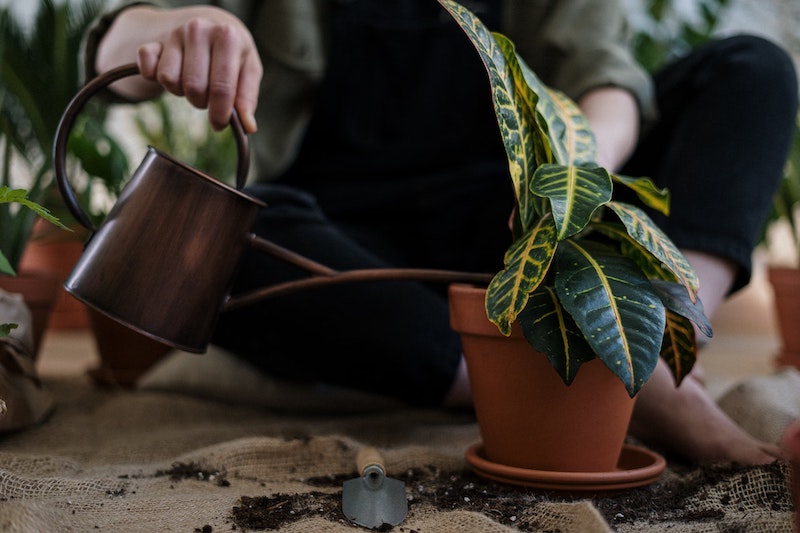The tropical plant Croton makes a colorful addition to any houseplant collection. Croton thrives with high humidity levels and moderate watering. These plants are drought tolerant when grown in the high humidity of their native habitats around Malaysia, Australia, and the South Pacific, reaching 6-10 feet in height. Crotons can be grown outdoors year round in USDA zones 11-12, but also grows well indoors where the temperature and humidity levels can be controlled.

How To Tell If Croton Needs Water
Crotons prefer consistently moist soil. When thirsty, croton will demonstrate all of the classic symptoms of under-watering, including brown leaf tips and sudden leaf drop. In extremely dry conditions, spider mites may infest weakened plants. To prevent under-watering, do not allow more than the top 1 inch of soil to dry between waterings, and ensure that the container has excellent drainage at the bottom. Use your finger as a gauge for soil moisture by poking the soil anywhere in the pot. If the soil is damp less than one inch below the surface, go a couple more days before watering. If the soil is dry deeper than your first knuckle, watering is needed immediately.
Besides under-watering, over-watering is one of the most common causes of Croton’s demise. Pots that have insufficient or no drainage holes allow moisture to accumulate around the roots. Roots that do not have good air circulation become weak and more susceptible to fungal diseases and rot. Unusual yellowing of the leaves and brown or dark marks on the leaf stems often indicate over-watering. Often you can save your plant just by withholding watering until the potting soil dries. In severe cases, you should remove the plant from the pot, cut away any brown or black mushy roots, and repot into fresh soil, using a new pot that has better drainage if necessary.
How To Water Croton
Potted croton requires consistent watering during the growing season, which is generally from April to late September. Aim to keep the potting mix damp to the touch while maintaining good drainage of the container. The roots should not sit in standing water from a saucer or decorative cache pot, as they need good air circulation for healthy growth. To keep humidity levels high, use a fine mist plant sprayer filled with either distilled water or purified tap water every 1-2 days.
Water your croton when the top 1 inch of potting mix is dry. Water carefully to avoid wetting the foliage as much as possible. Pour enough water until liquid runs from the bottom drainage holes, indicating the soil in the container has been evenly saturated. Remove any standing water from saucers or cache pots within 30 minutes.
Tropical houseplants like croton also appreciate a shower once in a while. This helps to remove dust from the leaves and flushes excess salts from the potting soil. Place the plant in your bathtub, shower, or kitchen sink without a saucer. Use the sprayer attachment to soak the soil and wash the leaves with slightly cool water (close to room temperature). Allow the container to fully drain before returning your plant to its growing position.

Croton Watering Tips
- Keep the soil evenly moist
- Allow the top 1 inch of potting mix to dry between waterings
- Use room temperature water for misting and watering
- Empty saucers and cache pots after watering
 |
Author Robbin Small - Published 10-21-2023 |
